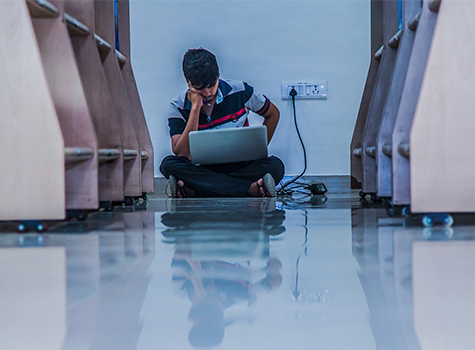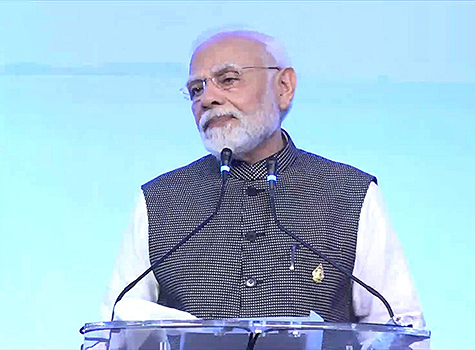
This is the season for student loans; well, it started back in September of last year but we are right in the thick of it at the moment and deciding how much do we need, but most important question always is who should be borrowing the money for the education. Should it be the student who should sign the paperwork or is it the parents?
According to Sallie Mae’s “How America pays for college 2017″ report this decision will be faced by many; in fact about 42 percent of families borrowed money to pay for college for the 2016/2017 academic year. It seems that more students take out loans than parents and it seems to be a personal choice based on the families’ preferences and financial circumstances. There are many options available and both the students and the parents have to sift through those to decide the best path for them. Here are three main things to think about when considering this borrowing decision.
Federal Loans
The interest rate on Federal student loans is fixed regardless of the student’s credit history or ability; this is unlike the credit card or similar debts where the rates will depend on your creditworthiness. Also a cosigner is not required and these loans are typically less expensive than a private student loan or even a Federal parent plus loan. Because of all these reasons students should try and exhaust their federal student loan eligibility before looking at other options.
There are other benefits too in addition to what is mentioned above. When the time comes to pay back you can apply for an income driven payment plan where the loan payments are based on a percentage of the borrower’s discretionary income and family size. It is hard to believe but some federal student loans can be forgiven under certain circumstances. Those who choose to work for the government or in qualifying non-profits or in teaching, for example, may qualify for a loan discharge. One has to be so inclined to go in that kind of field though.
This is all well and good but there are limits. The federal student loans may not or would not fully cover the cost of the schooling or college of their choice because there is a limit as to how much one can borrow, both annually and in total. This limit depends on the student’s years in school and whether or not he or she is a dependent.
If the federal loans would not fully cover the cost of schooling and other scholarships and grant opportunities are exhausted, then different types of appropriate loans need to be considered. This is where we turn to our parents to determine how much financial responsibility they are willing to bear or take on; to be frank without putting them into any kind of bad or awkward situation. As a rule and I have mentioned this before, parents should not consider cashing their retirement savings to support children’s education.
Parental Support
As mentioned above, if parents can’t afford to take on college debt they shouldn’t. Parents would ideally like to support and cover their children’s education, not all parents are in a position to do so and they should be very realistic and practical about it. Students can support their college ambitions many different ways but parents don’t have any alternatives if they are thinking of cashing their retirement accounts.
If parents decide to take a loan for their children’s education they should make sure that they can pay it off with their own earning power in the near future.
Federal direct plus loan is available for parents to borrow from US Education Dept. This will cover any cost not covered by the student’s financial aid package. Unfortunately, parents generally need to start paying back as soon as the full disbursement of the loan is done but they can request some deferment especially if the student is still in school. Interest rates for Direct Plus loans are higher than some private options and this loan cannot be transferred to the student eventually. There is also a stiff origination fee.
Borrowing from Home Equity was always an option until the beginning of this year when the tax law changes orchestrated by Congress made it not so attractive. With a home-equity line of credit (HELOC) borrowers can withdraw as and when they need the money up to the amount pre-approved by the bank which will depend on the equity which is already accumulated in your home. These loans are often floating interest loans. A home-equity loan is a one time borrowing deal and the money is all yours at that point but the interest rate is fixed and is usually lower than the HELOC. Parents have to consider many factors such as how much they need, how much they can afford and the time frame for paying it back.
Private Parent loans lenders offer private student loans for parents; typically these loans need a strong credit history. These loans can be more expensive than the alternatives. Students also have an option of taking on private student loans which may be offered by state-based agencies, public companies, market based lenders and banks.
All these loans require a cosigner, often the parents, because most college age students don’t have enough credit history to obtain them on their own. Such loans can and will affect the credit record of both people on the loan.
Motivated Students
There is no easy way out, but there are other solutions available. If the parents have thought about this dilemma while the student is still young and help them to be good in studies, they can certainly go after the merit scholarships available at many different levels. They can also get credits in college for doing great AP work in high school. That is one path which is reasonably free of looming dangers except having to do dedicated and focused hard work in high school.
———
Mo Vidwans is an independent, board-certified financial planner. For details visit www.vidwansfinancial.com, call +1 (984) 888-0355 or write to [email protected].



